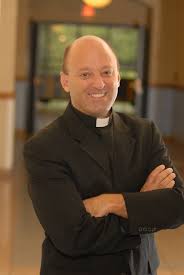 In my podcast conversation with Fr. John Belmonte, SJ, the superintendent of the Diocese of Joliet, when we discussed the Church document The Catholic School on the Threshold of the Third Millennium (Vatican, 1997) as part of the Catholic School Matters podcast series, we discuss the mission of Catholic schools. If a Catholic school does not have a well-defined mission statement, paragraph 6 contains food for thought:
In my podcast conversation with Fr. John Belmonte, SJ, the superintendent of the Diocese of Joliet, when we discussed the Church document The Catholic School on the Threshold of the Third Millennium (Vatican, 1997) as part of the Catholic School Matters podcast series, we discuss the mission of Catholic schools. If a Catholic school does not have a well-defined mission statement, paragraph 6 contains food for thought:
The school is undoubtedly a sensitive meeting point for the problems which besiege this restless end of the millennium. The Catholic school is confronted with children and young people who experience the difficulties of the present time. Pupils who shun effort, are incapable of self-sacrifice and perseverance and who lack authentic models to guide them, often even in their own families. In an increasing number of instances they are not only indifferent and non-practicing, but also totally lacking in religious or moral formation.
The authors point out a poverty in many forms in paragraph 15—first, the material poverty which the Church is called to encounter and serve and also the spiritual poverty which afflicts all schools.
The girls from poor families that were taught by the Ursuline nuns in the 15th century, the boys that Saint Joseph of Calasanz saw running and shouting through the streets of Rome, those that De la Salle came across in the villages of France, or those that were offered shelter by Don Bosco, can be found again among boys who have lost all sense of meaning in life and lack any type of inspiring ideal, those to whom no values are proposed and who do not know the beauty of faith, who come from families which are broken and incapable of love, often living in situations of material and spiritual poverty, slaves to the new idols of a society, which, not infrequently, promises them only a future of unemployment and marginalization.
The integral education which Catholic schools provide addresses this poverty. This point infuses life and meaning to all schools, even those with affluence. The students are hungry and are in need of Christ—despite or perhaps because of their material situation.
The other area of Threshold I find valuable is contained in paragraph 11, part of the section entitled “The Catholic School at the Heart of the Church.” As divisions have emerged within dioceses and between parishes with schools and those without, Catholic school leaders often struggle to justify their existence (not to mention the need for subsidies!). The authors address this directly, “The ecclesial nature of the Catholic school, therefore, is written in the very heart of its identity as a teaching institution” (11). As Fr. Belmonte points out, the more the Catholic schools engage in the pastoral work of the parishes, they are sharing the pastoral work of the Church.